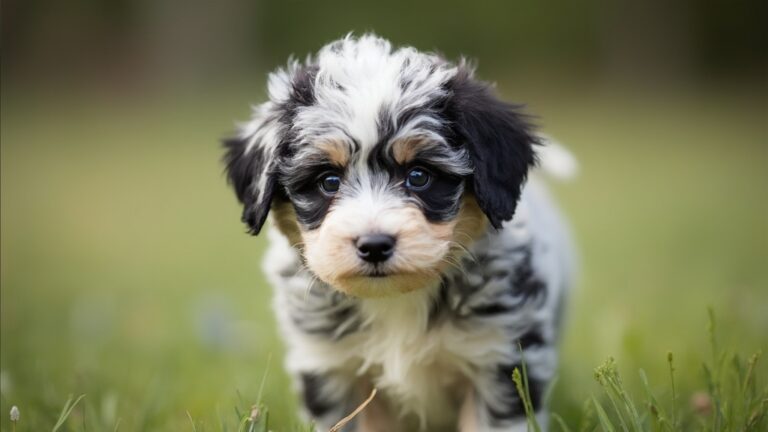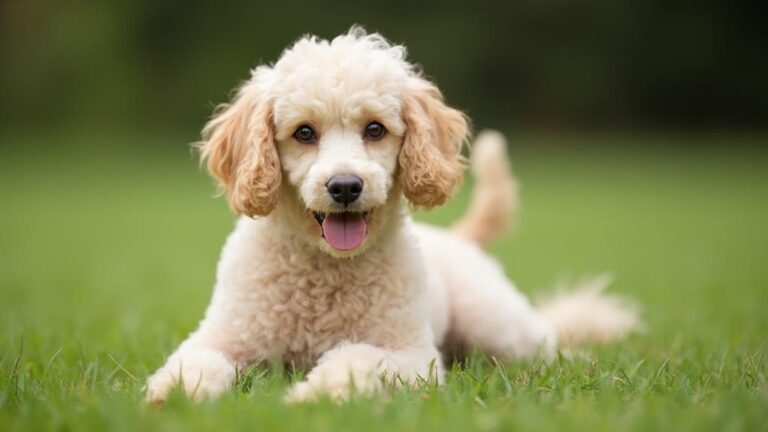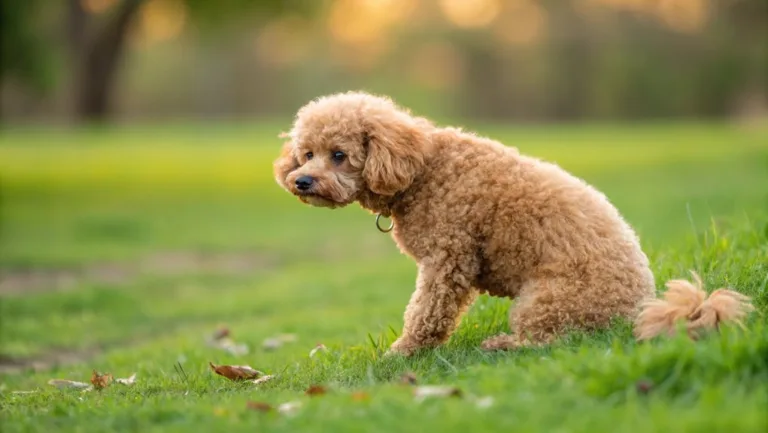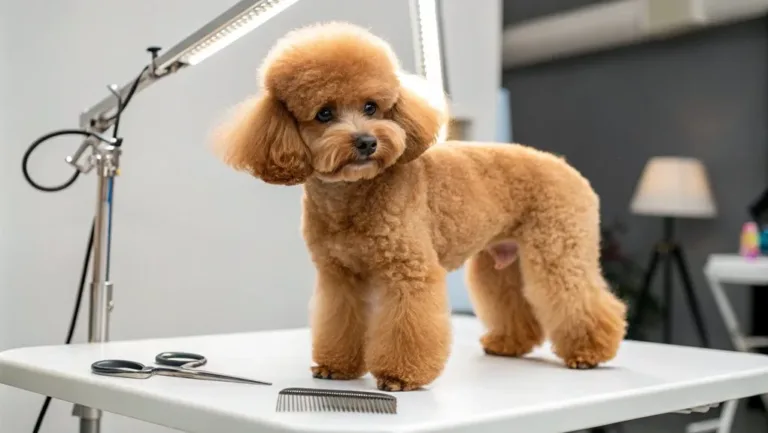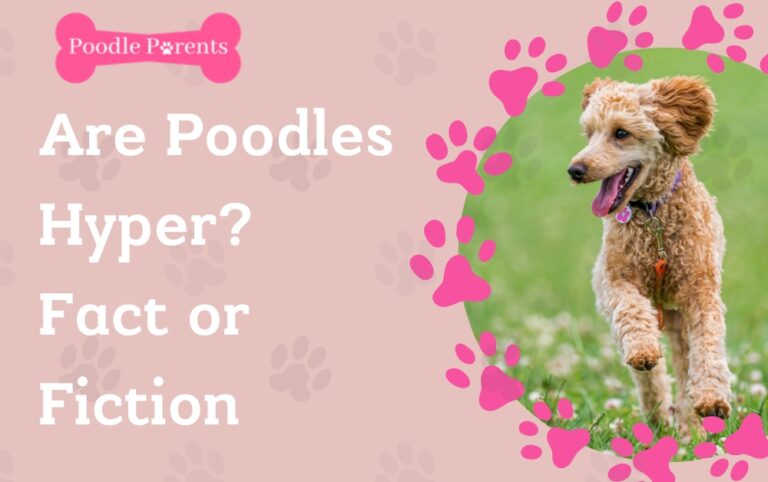Why Does My Dog Bark When I Hug Someone?

When your dog barks as you hug someone, it’s often due to protective instincts, resource guarding, or anxiety. So Why Does My Dog Bark When I Hug Someone?
They might see the hug as a threat, trying to guard you like a valuable resource. Sometimes, it’s just a sign of stress as they perceive this unfamiliar interaction.
Breed-specific traits can amplify these responses, particularly in herding or guard dogs. Training using positive reinforcement can help manage this behavior, signaling calmness during affectionate moments.
Recognizing and addressing the roots of barking is key to a more peaceful environment. There’s more to uncover on how to encourage a serene atmosphere.
Understanding Your Dog’s Protective Nature
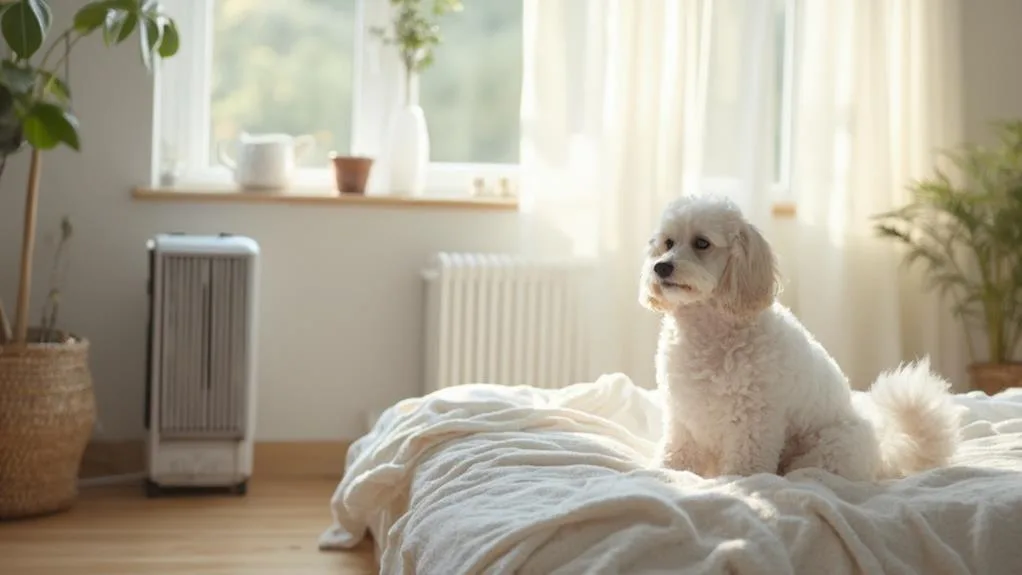
A dog’s protective instinct often kicks in when they see their owner being embraced by others, leading to barking or other reactive behaviors.
Your dog may perceive a hug as a potential threat, even when it’s clearly affectionate to you. This reaction stems from their natural instinct to guard what they consider valuable – in this case, you.
When someone moves to hug you, your dog might interpret this as an aggressive action, triggering their protective response through barking.
This behavior isn’t always rooted in pure protectiveness; it can also be influenced by jealousy or anxiety about losing your attention. Your dog may view you as their property and feel compelled to intervene when others get too close.
Understanding this protective nature is essential because it helps explain why your dog reacts so strongly to simple displays of affection.
If your dog barks during hugs, they’re likely trying to communicate their concern for your safety or express their discomfort with the situation.
While this behavior comes from a place of loyalty, it’s important to address it through proper training to make sure it doesn’t become problematic.
The Role of Resource Guarding

Resource guarding plays a significant role in why your dog barks during hugs, as they often view you as a valuable possession that needs defending.
When your dog exhibits guarding behavior, they’re fundamentally treating you like a prized resource that they don’t want to share with others, similar to how they might guard their food bowl or favorite toy.
This protective instinct can manifest as barking, growling, or attempting to physically insert themselves between you and the person you’re hugging.
Your dog’s resource guarding isn’t just about jealousy; it’s a deeply ingrained behavior that stems from their need to control access to what they consider valuable.
While it may seem like simple attention-seeking, this behavior can actually indicate a more complex issue related to your dog’s sense of security and their role in your household.
You’ll need to recognize that resource guarding can escalate if left unaddressed, potentially leading to more serious behavioral issues.
This isn’t just about your dog being possessive – it’s about their fundamental need to protect what they consider theirs, and you’ll need appropriate training techniques to help them understand that sharing your affection isn’t a threat to their security.
Anxiety and Stress Signals

During moments of physical affection between humans, your dog may display various anxiety and stress signals that explain their barking behavior.
When your dog sees you hug someone, they might exhibit signs of discomfort like lip licking, yawning, or pacing before they start barking. These stress signals often indicate that your dog feels left out or uncertain about the situation.
When people hug, your dog may interpret this closeness as threatening or unusual body language, triggering their anxiety response.
Your dog’s barking could be their way of communicating distress or attempting to break up what they perceive as a concerning situation. Watch for other stress indicators such as whale eye (showing the whites of their eyes), excessive panting, or tucked tail positions.
If your dog barks during hugs, they might be experiencing separation anxiety or fear that they’re losing access to you.
This anxiety can intensify if your dog feels left out of social interactions or perceives changes in your attention toward them.
Understanding these stress signals can help you better address your dog’s emotional needs and develop appropriate training strategies to manage their barking response.
Training Solutions To Stop A Dog From Barking
Several effective training solutions can help manage your dog’s barking behavior during hugging interactions.
Start by implementing positive reinforcement techniques, rewarding your dog with treats and praise when they remain calm during physical displays of affection.
Gradually desensitize your pet to hugging by practicing with a family member while keeping your dog at a comfortable distance.
You can use a barker breaker device as a temporary aid, but it’s crucial to focus on long-term behavioral modification through consistent training.
Begin with short hugging sessions and slowly increase the duration as your dog shows improvement. When your dog starts to bark, avoid giving attention, as this might reinforce the unwanted behavior.
Consider teaching alternative behaviors, like going to a designated spot or lying down when people hug. Practice dog training exercises that build confidence and reduce anxiety, such as “stay” and “leave it” commands.
Remember to remain patient during the gradual desensitization process, as changing established behaviors takes time.
If your dog’s barking persists despite these efforts, consult a professional trainer who can develop a customized training plan based on your dog’s specific needs and temperament.
Breed-Specific Behavioral Patterns

Different dog breeds exhibit distinct behavioral patterns when it comes to barking during hugging interactions.
Your dog’s genetic predisposition profoundly influences how they perceive and respond to physical affection between humans. Understanding these breed-specific tendencies can help you better manage your dog’s reactions.
| Breed Type | Common Behavioral Pattern |
|---|---|
| Herding Dogs | Intensely monitor and control movement |
| Guard Dogs | Protective and territorial responses |
| Companion Dogs | Attention-seeking and anxious barking |
When your dog is trying to interrupt hugging moments, consider their breed’s historical purpose.
For example, herding breeds like Border Collies and Australian Shepherds may bark to control movement, while guard breeds like German Shepherds might perceive hugs as potential threats.
If your dog has had negative experiences with close physical contact, this can amplify their breed-specific reactions. Additionally, companion breeds like Cavalier King Charles Spaniels might bark due to jealousy or anxiety about being left out.
Recognizing these inherent breed characteristics allows you to implement more targeted training strategies that work with, rather than against, your dog’s natural instincts.
Creating Boundaries and Rules
Establishing clear boundaries for your dog during intimate moments requires consistent enforcement and patient training. When your dog barks during hugs or displays of affection, you’ll need to set firm rules about acceptable behavior and stick to them.
Start by teaching your dog a “place” or “go to bed” command, where they must stay in a designated spot when you’re showing affection to others. Reward your dog with treats and attention when they remain calm and follow these boundaries.
If your dog breaks the rules by barking or jumping, immediately redirect them back to their spot without giving them the attention they’re seeking.
Consider implementing a structured routine where your dog receives dedicated attention and exercise before situations that typically trigger barking.
This helps prevent attention-seeking behavior during hugs or intimate moments. You can also use positive reinforcement training to teach your dog that staying quiet during these moments leads to rewards.
Remember that consistency is essential – everyone in the household must enforce the same boundaries. If you sometimes allow the behavior and other times correct it, you’ll only confuse your dog and make training less effective.
Managing Changes in Family Dynamics

Family changes like new relationships, babies, or visiting relatives can markedly impact your dog’s barking behavior during hugs and displays of affection.
When you introduce new people or adjust your daily routines, your dog may feel unsettled and respond with increased barking or attention-seeking behaviors.
Your dog’s resource guarding tendencies might intensify during these shifts, especially if they view you as their primary resource.
You’ll notice they bark more frequently when you show affection to new family members, driven by a combination of jealousy and uncertainty about their position in the household hierarchy.
To manage these changes effectively, maintain consistent routines for your dog even as family dynamics shift. Create positive associations between your dog and new family members through controlled interactions and reward-based training.
If your dog barks during displays of affection, don’t inadvertently reinforce this behavior by giving them attention. Instead, reward quiet, calm behavior and gradually help them adapt to the new normal.
Consider working with a professional trainer if your dog’s jealousy or attention-seeking behaviors become excessive, particularly when preparing for significant changes like a new baby’s arrival.
Building Trust Through Positive Reinforcement
Trust forms the foundation of managing your dog’s barking behavior during hugs and physical affection.
When you work with your dog using positive reinforcement techniques, you’ll create a stronger bond and help them understand that hugging isn’t threatening. Start by rewarding your dog for calm behavior when people are nearby, even before any hugging occurs.
Work with an experienced dog trainer to develop a structured positive reinforcement plan. You’ll want to gradually expose your dog to hugging situations while offering high-value treats and praise.
When your dog remains quiet during brief hugs, immediately reward your dog with treats and enthusiastic praise. As your pet becomes more comfortable, slowly increase the duration of hugs while maintaining the rewards for good behavior.
Consistency is essential during this process. Every family member should follow the same approach, using positive reinforcement to shape your dog’s response.
Keep training sessions short and upbeat, and never punish your dog for barking during hugs, as this can increase anxiety and make the behavior worse. Instead, focus on catching and rewarding moments of calm, helping your dog associate hugging with positive experiences.
Conclusion
Think of your dog’s barking during hugs as a smoke alarm going off—it signals underlying issues like jealousy, anxiety, or protective instincts. By understanding these triggers, you can address them effectively.
Use training solutions, establish boundaries, and employ positive reinforcement to reassure your furry friend.
Just as you’d silence a smoke alarm by removing the cause, you can quiet your dog’s barks by addressing their underlying emotions, creating a harmonious environment for everyone.
FAQ: Why Does My Dog Bark When I Hug Someone?
There are several reasons why your dog is barking when you hug or kiss someone. Dogs are social animals and may feel left out or anxious when they see their owners showing affection to others. Some dogs may bark at people hugging because they perceive it as threatening body language. Additionally, your dog may bark when they see this behavior due to excitement, jealousy, or a desire to want to be part of the interaction. It’s important to understand that dogs may bark for a variety of reasons, and it’s crucial to observe your dog’s body language to determine the underlying cause.
It’s possible that your dog is jealous when it barks during hugs. Dogs can experience emotions similar to jealousy, especially when they feel their owner’s attention is being diverted. If your dog gets agitated or barks when anyone receives affection from you, it might be a sign of jealousy. However, it’s essential to remember that what we perceive as jealousy in dogs may be a combination of other emotions, such as anxiety or insecurity. Observing your dog’s overall behavior and body language can help you determine if jealousy is the root cause.
To stop your dog from barking when you hug someone, you can try several approaches: 1. Desensitize your dog to hugging by gradually exposing them to the behavior. 2. Praise the dog and offer treats when they remain calm during hugs. 3. Ignore the barking and avoid giving attention when the behavior occurs. 4. Train a “quiet” command to use when your dog starts barking. 5. Ensure your dog gets enough exercise and mental stimulation to reduce anxiety. 6. Provide your dog with a safe space or distraction during hugging situations.

